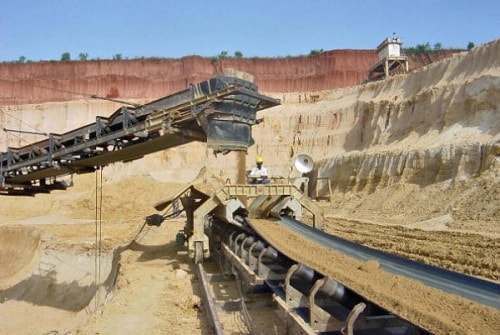Two federal agencies have approved a 2.4-mile-long open pit phosphate mine proposed by a Canadian company in southeastern Idaho.
The U.S. Bureau of Land Management and U.S. Forest Service late last week issued separate decisions approving the plan by Calgary-based Agrium Inc.
The BLM manages the area where the mining will occur, while the Forest Service manages land that will receive waste materials.
Agrium turns phosphate ore into fertilizer needed by farmers to grow food. Phosphate mining is a major business in southeastern Idaho, and BLM officials said the new mine will preserve 1,700 jobs and generate about $85 million per year for the local economy in Caribou County.
The expected life of the new Rasmussen Valley Mine is just under eight years, and the project follows a pattern where companies move to a new area once an old area is mined out. Mining has taken place in the area since the early 20th century.
The area contains one the nation’s most abundant deposits of phosphate, and agribusinesses Simplot and Monsanto also have mines in the area. But the area also contains 17 Environmental Protection Agency superfund sites because of pollution from past phosphate mining.
Federal officials said the latest mine has requirements to avoid those problems.“The water quality issue is the No. 1 issue that we deal with when it comes to determining impacts with mines that are being permitted now,” said Bill Volt, environmental planning coordinator with the BLM.
Virginia Gillerman, an associate research geologist with the Idaho Geological Survey, said the area is rich in phosphate because it was once an 116,000-square-mile inland sea where organic material from fish, plants and small animals was deposited over a 5-million-year span about 265 million years ago.
Geologic activity caused faulting and folding in the sedimentary rock that once formed the seabed that’s now part of Idaho and three neighboring states. In Idaho, the activity pushed the phosphate closer to the surface, making it economical to mine, Gillerman said.
Volk said Agrium has struck a deal with Monsanto to take waste rock from the new mine and dispose of it in a pit at a nearby Monsanto mine now going through the reclamation process.
The material will be covered, Volk said, to prevent water from reaching it that could cause selenium to leach out into streams or be absorbed by plants. Selenium is needed for life but is toxic in large quantities.
Volk said the selenium problem first became apparent in the 1990s when hundreds of sheep and horses died after eating plants over mine waste material that had absorbed selenium from that material. The realization of what caused the deaths led to the superfund sites.
Additionally, water running through the waste rock has caused increased selenium in streams that can harm aquatic organisms.
Earthworks, an environmental group, earlier this month released information from tests it did on trout in streams below Simplot’s Smoky Canyon Mine. The group said the fish in Sage Creek and Crow Creek had selenium levels up to four times the levels the EPA says can cause defects and reproductive failure in fish.
“It’s been eight years since the (Smoky Canyon) mine expansion was approved, yet there’s still no proven cover system to prevent future water pollution,” Bonnie Gestring of Earthworks said in a statement.







